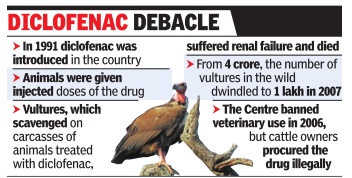7667766266
enquiry@shankarias.in
Why in news?
The 104 birds bred at Rani, Assam face a serious threat by Diclofenac drug used in cattle.
How is vulture population in India?
How does diclofenac affect vultures?

What are the challenges in eradication?
What are the efforts to address this?
Source: The Hindu
Quick Fact
VCBCs